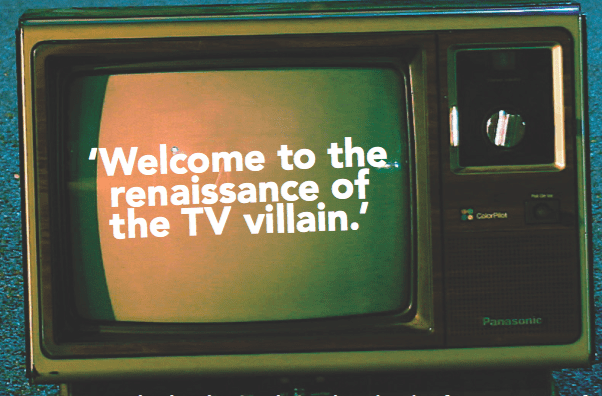The villain of my childhood was probably Voldemort. Possibly also Randall from Monsters Inc. They were archetypal villains. Sure, Voldemort had the whole miserable childhood thing going on, and we learn in Monsters University that Randall was a bit shy but, for the most part, the backstory was irrelevant. They were villains intent on curbing the adventures of infallible, lovable protagonists like Harry or Mike Wazowski. Bad was bad and good was good.
Even as I got older, Hollywood’s bad guys were generally easy to spot. Think: the classic Bond villain with a sinister eye patch or a muted Russian accent, always defeated in their nefarious doings by the time the lights came on. They are usually old, ugly and often unnecessarily flamboyant. Villainy has typically been the realm of damaging ethnic stereotypes and caricatures. Certainly, Hollywood is striving to create more complex villains; Hannibal Lecter in Silence of the Lambs is an example of how well-crafted villainy can be. More recently, the Armitage family in Jordan Peele’s directional masterpiece Get Out delivered a valuable lesson in psychological creepiness. Yet, many of the two-dimensional stereotypes of villains remain. Bad remains bad and good remains good.
But what about TV? Villainy in TV has never been quite so clear-cut as in film; the sitcom or series style doesn’t lend itself as comfortably having a stock bad guy and certainly not one with any emotional depth or believable motivation. Antagonism in TV traditionally comes from the mundane aspects of life and family or, in the case of crime, faceless organisations or governments. There was no seething criminal overlord presiding over the misfortunes of the characters in Friends (unless you count Ross which, after a recent rewatch, I am inclined to do so). Commentary on good and evil is never as sharply defined in TV and villainy has always been traditionally underrepresented.
Like Hollywood, TV is experiencing its own revival and refining of the classic villain. Not only are villains given more screen time in general but they also crafted to incorporate backstories, emotional depth, complex narratives and subtleties of character that are very removed from the moustache twirling, posturing villains of an earlier era.
Welcome to the renaissance of the TV villain.
I’m going to start with the really bad guys. I’m thinking Ramsay Bolton in Games of Thrones here. Ramsay engaged in plenty of horrific crimes but was an important feature of the ensemble cast. In a similar vein, House of Cards’ Frank Underwood is the pure antithesis of a protagonist; a man so intent on his political goals that he is willing to take down anyone caught in his path without even a hitch in his South Carolina drawl. He has been crafted so magnificently, both in the subtleties of Kevin Spacey’s performance, but also the narrative handed to him. Both of these characters are so blisteringly evil and devoid of any empathetic possibilities yet have been expertly crafted and executed; they are handsome and beguiling, with no need to rely on comedy tropes or physical affectations.
Sure, the Ramsay Boltons of the world are near-compulsive viewing but what has really captured the public’s attention are characters like Tony Soprano and Walter White – the lovable anti-hero. They’re engaging in some pretty serious criminal behaviour, but there’s something redeeming in them, something very human that makes them so watchable. Their motivations and actions are fairly horrific, but their starting point is not far from our own realities. Misfits perhaps best epitomises our current love of the antihero: young offenders completing community service while dealing with the troubles associated with superpowers. They’re in equal measures vulgar and lovable, badly behaved and saving the world. Ensemble shows such as How to Get Away with Murder and The Wire have astutely blurred the dichotomy between good and bad with their characters alone: Omar Little with his chilling whistle and strong moral compass, Annalise Keating and her dazzling ruthlessness. Women, especially, while still criminally underrepresented in TV, are given more opportunities in villain and anti-hero roles. This article wouldn’t be complete with a mention of the ladies of Orange is the New Black and of course, Claire Underwood of House of Cards, who is equally as manipulative and exceptional as her husband.
Perhaps the problem here is that we’re short on heroes. There’s something about the classic TV protagonist that is just a little too perfect, and too bland for me. I never found I could relate to Monica and Rachel, and How I Met Your Mother lost its way for me because they were all just so nice to each other. Villainy is much more fun to watch. The nuances of baddies and how they so carefully represent but also enmesh good and evil gives them a certifiably edge over heroes in my mind. Current TV is handing us a platter of baddies, a plethora of smart, twisted characters or lovable petty criminals, Moriartys and Cersei Lannisters. Can bad still really be bad when it’s this good?
We acknowledge the Ngunnawal and Ngambri people, who are the Traditional Custodians of the land on which Woroni, Woroni Radio and Woroni TV are created, edited, published, printed and distributed. We pay our respects to Elders past and present. We acknowledge that the name Woroni was taken from the Wadi Wadi Nation without permission, and we are striving to do better for future reconciliation.
